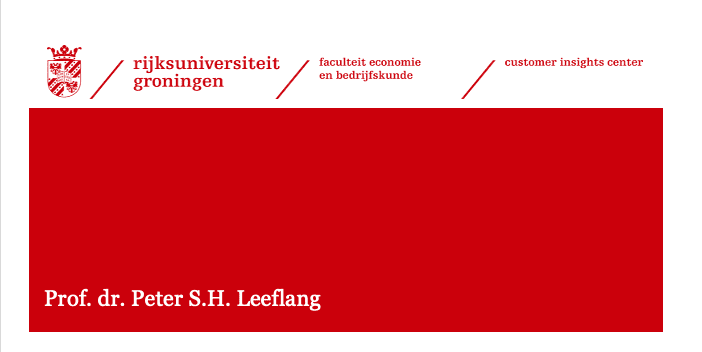With the increasing amount of data and analysis techniques, organisations are facing new challenges. Through clever use of data, organisations can gain new insights. These form the basis for new products and services and the optimisation of processes. So there are plenty of opportunities. At the same time, competitors have the same opportunities. Doing nothing is therefore not an option. But how do you use that data intelligently in an organisation?
Recently, our colleagues Martin Schuit and Arthur Linssen spoke about this topic during a NeVaP inspiration session. NeVaP is the Dutch platform for real estate operators that regularly organises meetings for knowledge sharing and inspiration. The Next Organization is knowledge partner of this platform.
The theme of the meeting was: data-powered customer value: how big data supports and influences strategic frameworks. Under the chairmanship of Arthur Linssen, various speakers shed light on the use of data in the real estate sector. The final piece of the afternoon was the presentation by Martin Schuit, who answered the main question of how to take steps in the use of this data in daily operations. Under the title 'Dashboarding and CRM - acting on results while looking ahead', he presented the audience with a step-by-step plan.
In four steps a vision translated into requirements for ICT
The starting point of his approach is a clear vision of CRM. What is it that an organisation wants to achieve with CRM? A good vision is always reasoned from the end customer's perspective: 'Company X wants to achieve for <end customer Z'. For example: Company Jansen wants to give its customers full insight into the status of an order during the production and delivery process. Formulating such a vision clearly brings focus and makes it clear what it is that organisations should achieve with their data.
This is followed by four steps, in a more or less logical order. These are: Map stakeholders (1) internally and externally, and determine what information (2) you as an organisation want to know from them in order to realise the vision. Then determine the impact on processes and people (3) and finally, determine what requirements this places on the systems (4). The strength of the approach is its simplicity and practicality.
"Map stakeholders internally and externally, and determine what information you as an organisation want to know from them in order to achieve the vision."
In step 1, an organisation determines the internal and external stakeholders, in order to be able to determine for each stakeholder what the benefits of a well-functioning CRM system would be for them. For example: a reseller can sell more because of good information provision, because end customers are satisfied with the insights into the ordering and delivery process.
By putting the emphasis on advantage (and not just technical possibilities), it becomes clear what to look for when collecting and processing data into insights. After all, you can analyse data endlessly, so focus is needed in order to know what is really important. This also means that step 2, determining the required data, has been taken.
Then determine the impact on processes and people
In step 3, the required adjustments of processes and activities of people are determined. This is an important step that is often forgotten. It is tempting to determine the requirements for the systems after step 2, when the necessary information has been determined. This is possible, but it misses the opportunities of data and analysis. By taking a critical look at the current processes and adjusting them in the light of the benefits of CRM for the stakeholders, an organisation can really make a difference. For example: the stocks of finished products must be made available online, so that resellers know which products are in the pipeline. This enables them to offer new information to their customers.
Determine what requirements this places on the systems
The last step is then logically the adaptation of the systems. It is important here to keep an eye on the purpose of the information in the systems. Martin schuit showed a reasoning formula here as well: ' can do so that . For example: a reseller can request the delivery times of a product and send them to an end customer. This forms the basis of concrete ICT requirements for the adaptation of the systems in the organisation.
The intended results from the same formula are expressed in KPIs for the CRM system, with which the effect of CRM can be measured. And the latter is not unimportant. Investments in data-processing systems are often intensive. Knowing in advance what the KPIs of the CRM system are provides a business case on which to base investments.
Do you want to know more about the use of data in your organisation, or how CRM systems can be adapted to use data in daily business? Then get in touch with us.



